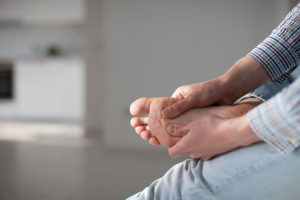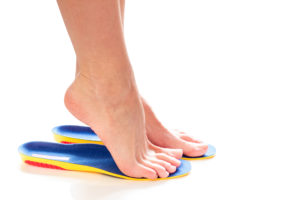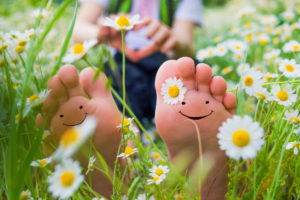Many people don’t think much about their feet -- until they hurt. Working in the laboratory on hard, typically concrete floors can be very taxing on the body. In honor of Foot Health Awareness Month, we’re here to guide you in finding foot comfort while working all day (and night!) in the laboratory.
Feeling Sore?
Tips & Tricks to Help Foot Pain
Part II
Karen DiDonato ⋅ April 19, 2021
In this second of a multi-part foot-related series, we will provide some suggestions for inserts that may provide support and may help ease the strain of standing and walking for many hours during your shifts.

Of course we’re not doctors. We’re just providing suggestions based on experience and feedback from other healthcare professionals. We always recommend visiting a local running store for a full evaluation, and if you have problems with your feet that a running store can’t help tackle, please visit your doctor or a podiatrist.
While all running shoes come with some sort of insole, they can be flimsy and break down easily. If you have pain in your feet, legs, or joints after a long day of work, you may want to consider adding shoe inserts or even prescription orthotics.
Shoe Inserts

Shoe inserts, designed to improve comfort, are any kind of non-prescription foot support designed to be worn inside a shoe. Inserts can be very helpful for a variety of foot ailments, including flat arches and foot and leg pain. They can cushion your feet, provide comfort, and support your arches, but the APMA says they can’t correct biomechanical foot problems or cure long-standing foot issues; for that, a podiatrist is needed.
Some shoe inserts are rigid and supportive, and they are shaped to influence your foot by providing arch support or other structure. The most common types of shoe inserts are:
- Arch supports: Some people have high arches. Others have low arches or flat feet. Arch supports generally have a “bumped-up” appearance and are designed to support the foot’s natural arch.
- Insoles: Insoles slip into your shoe to provide extra cushioning and support. Insoles are often made of gel, foam, or plastic.
- Heel liners: Heel liners, sometimes called heel pads or heel cups, provide extra cushioning in the heel region. They may be especially useful for patients who have foot pain caused by age-related thinning of the heels’ natural fat pads.
- Foot cushions: Do your shoes rub against your heel or your toes? Foot cushions come in many different shapes and sizes and can be used as a barrier between you and your shoe.
Whether you’re looking for a little extra cushion or more pronounced support, insoles for running shoes work with your sneakers for a more personalized ride. Some insoles give you more cushioning in high-impact areas, like your heel and forefoot, where others support the arches more.
There isn’t one best pair of insoles for every user—it’s all about preference. Some runners and walkers will find the standard insoles that come with their shoes deliver the right amount of cushion and support, but others will like the more customizable experience of a third-party insole. Whatever you choose, make sure it’s comfortable for you.
Running shoe stores typically stock these easy-to-find insole brands: SuperFeet, Spenco, PowerStep. Try them on to find your best fit.
Best of all, the insoles mentioned above can be swapped between your running shoes and your casual shoes for comfort wherever you go.
If a shoe insert isn’t enough to solve the problem, you may need to see a podiatrist for prescribed custom-made orthotics.
Prescription Orthotics

Prescription orthotics are specially-made biomechanical medical devices designed to support and comfort your feet. They match the contours of your feet precisely and are designed for the way you move to correct your specific foot imbalance. They are specific to your unique foot structure and pathology. According to the American Podiatric Medical Association (APMA), if orthotics are needed, your podiatrist will capture a three-dimensional image of each of your feet. That image, as well as any measurements obtained by your podiatrist, is used to create a set of unique foot supports that will improve your foot movement and lead to more comfort and mobility.
Podiatrists use orthotics to treat foot problems such as: plantar fasciitis; bursitis; tendonitis; diabetic foot ulcers; and foot, ankle, and heel pain.
Regardless of whether you need orthotics, inserts, or the insole that came in your running shoes, do not let foot pain sideline you. A bit of preemptive care can go a long way, but if you experience numbness, pain, swelling, continuous heel pain, or ankle or foot pain, please see a professional.

